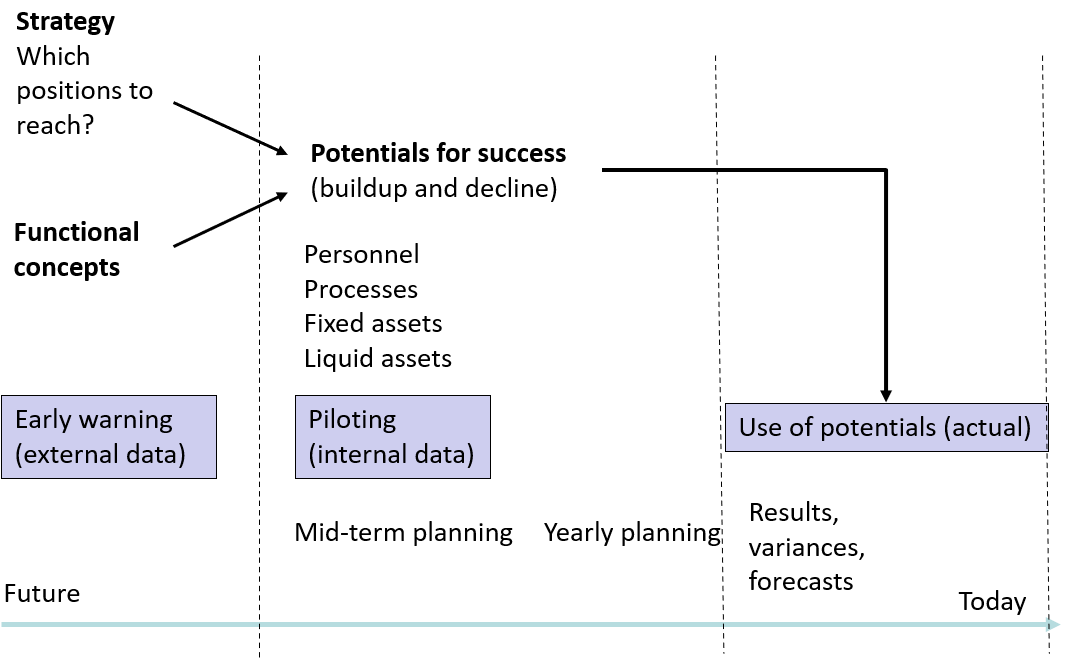Sustainable organizations need to identify opportunities, avoid or mitigate risks, and find and assess new market potentials. Milk has been around since time immemorial. Who still buys raw milk directly from the farmer (and likes to drink it)? Supply and consumption needs have changed, as have the forms in which products and services are presented.
Early warning
Early warning is intended to help an organization to recognize emerging or at least presumed developments in the business environment early enough to be able to react. It is about finding opportunities for future business fields and identifying threats that could limit or even prevent the success of existing and future business.
Early warning cannot create certainty. However, it should lead the managers of an organization to consciously deal with ongoing or emerging changes in the various environments and take the findings into account in their strategic and operational planning decisions.
Following and evaluating new developments in terms of needs, attitudes, available materials and services, legal requirements and political trends is not only very time-consuming; there is also no guarantee that nothing is forgotten or fails to appear on the radar.
In order to limit the diversity somewhat, two approaches are used in our book to identify the relevant developments in a structured way and to prepare them for the planning process:
-
- General observation of focal points in reporting on the various sub-environments
- Derivation of specific early warning indicators that could influence the success of existing and future own strategic business areas.
In summary, the following picture emerges:

Early warning should help to define the strategies with their basic parameters and to determine the resulting requirements on the functional concepts.
In addition to the strategic insights, the early warning system should disclose which internal developments are to be realized by when so that the potential for strategy realization is available in good time.
